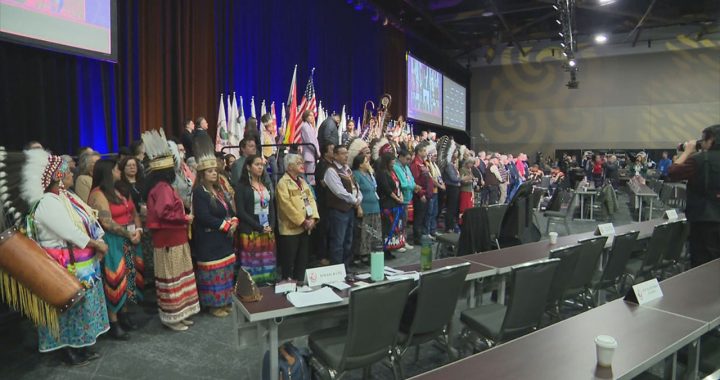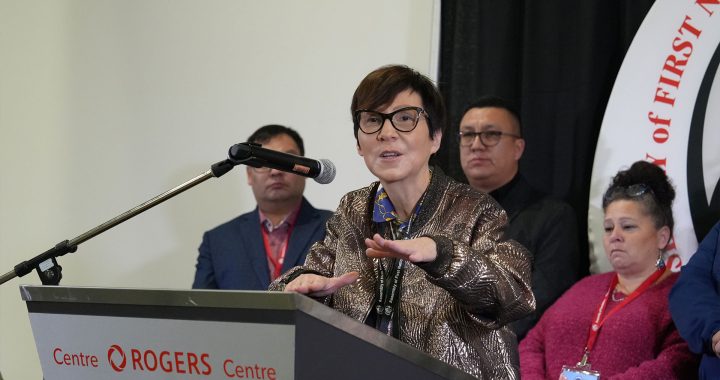Elders who had contact with Myles Sanderson inside prison appeared at the inquest looking into the circumstances that led him to kill 11 people on James Smith Cree Nation and nearby Welford, Sask., and wound 17 others.
Geraldine Arcand, testified she was working as an intake Elder at the penitentiary near Prince Albert, Sask., when Sanderson began his first federal sentence. She came up with an initial healing plan for him while he was incarcerated. She described him as “quiet” and “respectful.”
“He talked about his childhood and what transpired there,” said Arcand who worked for the Correctional Service of Canada as an Elder from May to July 2019.
Arcand said Sanderson talked about issues, particularly from his upbringing.
“It was the anger that he feels,” Arcand told the inquest in Melfort, Sask., as it entered its third and final week.
Sanderson would eventually get out of prison on statutory release in 2021. Statutory release is when a prisoner has served two-thirds of their sentence.
Harvey Knight is also an Elder with corrections and who spent time with him during the programs, said that he was an active participant in groups and there was no indication he could do something like this.
“I got to know him in the context of his healing journey in the group,” Knight told the inquest. “He didn’t stand out whatsoever as somebody who was different.”
‘Undue risk’
The inquest also heard about why parole was denied for Sanderson who later died in police custody.
Monica Irfan, a deputy director in policy and legislative initiatives with the Parole Board of Canada, spoke broadly about how it played a role in Sanderson’s incarceration and eventual release. She was not involved in Sanderson’s file.
Sanderson was serving his first federal prison sentence of more than four years, when the board denied his application for full parole and day parole in 2021. It considered his criminal record, including 59 convictions as an adult, his social history and release plans, among other things.
The board found Sanderson “will present an undue risk to society,” Irfan said, reading part of that decision at the inquest.
Irfan said the board’s role in Sanderson’s statutory release was to impose conditions.
Four months into his freedom, Sanderson was found to have been lying about his living arrangements, as he was staying with the mother of his children, Vanessa Burns. His release was suspended.
The inquest heard Sanderson’s community parole officer had recommended that he not be allowed back out based on his attitude and deceit.
Irfan said the board must look at “all of the factors — positive and negative — to reach a final conclusion.”
In February 2022, the board cancelled the suspension and Sanderson again received statutory release with a reprimand. The board said it believed Sanderson’s risk was manageable in the community.
Three months later, the Correctional Service of Canada deemed Sanderson to be unlawfully at large and a parole officer issued a warrant for his apprehension. He was still at large at the time of the massacre.
The inquest, in its third week in Melfort, Sask., is to establish the events leading up to the killings, who died, and when and where each person was killed.
Testimony is expected to wrap up Tuesday before the six-person jury deliberates on recommendations to prevent similar deaths in the future.
A separate inquest into Sanderson’s death is scheduled for February.
Over the last two weeks, the inquest has heard how the rampage unfolded from RCMP officers at the scene, major crimes investigators and health-care officials. It has also heard about Sanderson’s life and prison history from his parole officers.
RCMP said in an overview of the massacre that Sanderson went to the First Nation to sell cocaine. In the days before the killings, he caused chaos with his brother, Damien Sanderson.
Damien Sanderson was the first to be killed. Myles Sanderson then went door-to-door on the First Nation stabbing people.
An RCMP criminal profiler has testified that some victims were targeted because Sanderson had a grievance against them, and others just got in the way of his mission to kill.
With files from Kelly Geraldine Malone – The Canadian Press











